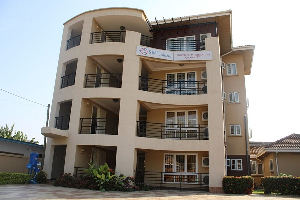Regional News of Sunday, 29 May 2011
Source: Sodzi Sodzi-Tettey
Ketu South shows the way in cholera elimination
The predictability of cholera outbreaks in Ghana as an annual ritual did nothing to stem public outrage at the epidemic proportions this year that recorded a national case fatality rate in excess of 1.5%. Even more disconcerting were media reports that the epidemic had actually been ongoing since the latter part of 2010 right through to the first quarter of 2011.
With the outbreak clearly out of control and spreading nationwide, public health authorities blamed the usual culprits; poor hand washing without soap, poor environmental hygiene, poor food hygiene and safety culture, lack of toilet facilities etc. With over 60 deaths from 4000 cases as at March 2011, health authorities appeared to have been taken unawares at the ferocity of the disease with public pressure forcing the hand of government to make a ‘reactive’¢ 5M donation towards emergency interventions.
Amidst the darkness of the 2011 cholera epidemic, it is important to throw light on the shining example of the Ketu South District Health Directorate. Here, high level leadership and stakeholder commitment, strategic interventions and innovations have been deployed to make the once infamous cholera disease a non issue. If 1.5% represents the threshold beyond which an epidemic is declared, then it is fairly safe to support the widely held opinion of Ketu South and its capital Aflao in the days of yore as a ‘cholera zone’. Indeed between 2003 and 2005, Ketu South consistently recorded epidemic proportions of cholera with case fatality rates of 7%, 3.2% and 1.3%.
No doubt, the phenomenal success story of Ketu South was a beautiful interplay of high level will and collaboration among local public health and political leaders, the generation of potent high leverage change ideas and their flawless execution under the coordinating mandate of the District Health Directorate (DHD). It is also worth pointing out the visible leadership provided in this public health intervention by Dr Andrews Ayim, himself a combined public health physician and a management expert who assumed the position of District Director of Health Services effective December 2004.
What is unmistakable in the Ketu story is the proactive and strong district leadership that felt sufficiently disturbed by the annual epidemics to create a burning platform for change at all levels. The initial assessment of the cholera burden in 2005 was dire; terrible sanitation conditions exacerbated by a thick migrant population in pursuit of business opportunities, lack of adequate toilet facilities both in public and in homes and lack of any sense of urgency among key stakeholders. Additionally, local health authorities encountered very low levels of knowledge on hygiene and low personal responsibilities for it, difficulties in educating the public in terms of the right personnel and messages, finance etc. To these Dr Ayim would add perhaps the greatest challenge of all, “… generating the necessary faith and belief in the model of interventions”
Building will
To optimize communication at all levels, hospitals in the district in addition to the District Assembly, assemblymen and community based surveillance volunteers were all identified, engaged and tagged as “FRIENDS”. With major communication barriers completely breaking down, the consequence of this move was that irrespective of the location, the occurrence of a health problem would be known to the DHD in real time to enable swift interventions. Having secured their full support, the following specific interventions were embarked upon.
Technical interventions
At a training organized for health workers in both public and private facilities plus opinion leaders in the district, a system of cholera case identification and early reporting was mapped out. Telephone numbers and critical information on location of offices and officers were made available.
The capacity of community-based volunteers was built on early suspected cholera case identification within the communities. Thus identified, the District health directorate then virtually swooped into the community with the suspected case, took relevant samples for testing, provided prophylaxis for contacts of the case, treated the case, decontaminated places suspected to harbor organisms e.g. toilets ,dump sites where defecation has occurred etc Tracing of all these contacts and sites was optimized with the use spot maps which were generated by the DHD.
A massive health education campaign was designed on hygienic practices, prompt utilization of services, breaking human to human transmission, proper disposal of “cholera dead bodies and management of funerals at the time of the epidemic.” In addition, formal and informal discussions on the progress of the epidemic at each point were on going to keep each person on the same page and as a means of dispelling wild rumors.
Also mapped out was a strategy aimed at “minimizing carrying patients over long distances for treatment.” This was done by increasing both the awareness and capacity of staff at health centers and community clinics to commence diagnosis and initiate prompt management of any suspected cases of cholera.
Within the hospitals, in addition to ensuring uninterrupted supply of logistics, a policy of “do not contaminate the facility, do not infect staff and other patients” was adopted.
At the District Health Directorate, data on diarrhea from all stakeholders was monitored continuously and subjected to strict analysis and more importantly, findings there from used for decision making.
“These were interventions that were carried out very well and I had to be very friendly and available for it to work. I had to know more than medicine and be interested in subjects very different from medicine to be accepted as the lead coordinator.”
Results
From an average case fatality rate of almost 4% between 2003 and 2005, Ketu South recorded 23 cases of cholera in 2006 with no deaths. Further, this number of reported cases represented an 83% reduction in the number of cholera cases recorded over the previous three years.
From 2007 to 2010, Ketu South did not record one single case of cholera and by implication and confirmed through data, absolutely no death.
Prior to 2009, the Ketu South District Chief Executive Hon Justice Cudjo committed resources to the removal of the rubbish dump at Avegato, the origin of most cholera cases. In clearing the rubbish dump, parts of some houses had to be demolished to make way for vehicles and machinery. In a fantastic show of continuity of good policies, the present DCE, Hon. Frank Amable is building a clinic with nurses’ quarters at the site of the old rubbish dump. As the health authorities point out, “These decisions were managed by opinion leaders, Assemblymen and women, Assembly Engineers, Budget and Financial Officers etc.”
Lessons learnt
Dr Andrews Ayim shares two key lessons learnt, incidentally all related to communication within a team.
“Informal discussions are good. In fact it is important to have talkative personnel at the helm of affairs as it averts unnecessary rumors and corrects misconceptions which are a real threat to health education”
Secondly, it is worth noting and enhancing the proxy measures employed by the community to measure the responsiveness of health services as a means of “generating public faith in our services.”
“Note that the calls we get in a cholera epidemic may be unrelated to the epidemic felt needs. People start to demand clinics in communities, delivery issues, satisfaction with political leadership etc We should have capacity to deal with all these to be capable of impacting on perception of our responsiveness to cholera.”
At the national level, it would be insightful to see what strategies will be adopted to ensure that the nation is totally rid of cholera through the active engagement of all stakeholders in2012.
Sodzi Sodzi-Tettey










